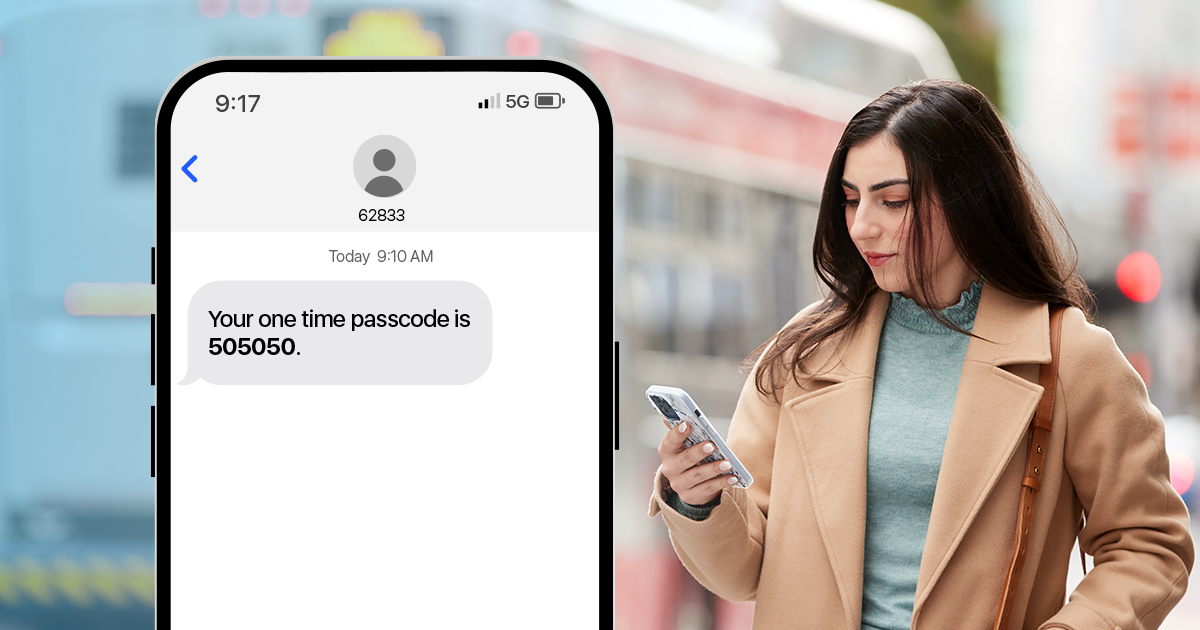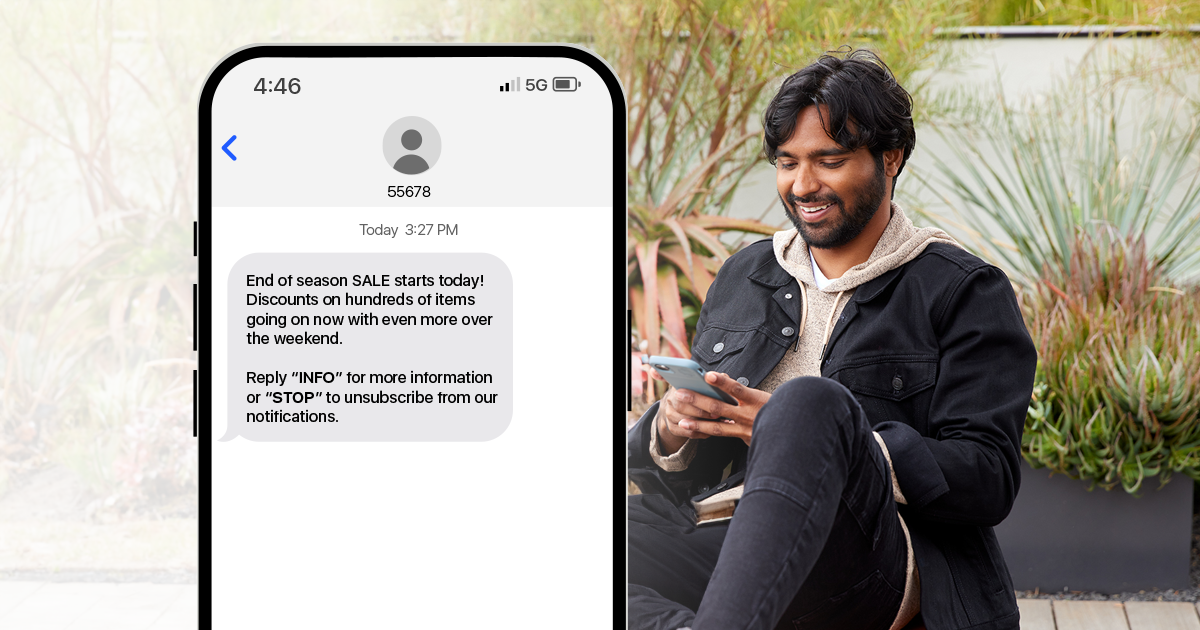
Security is paramount when building digital experiences. Without a robust security approach, you risk compromising both your business and your customers. Identity theft, financial losses, ransomware, and many other threats dominate the online landscape. Bad actors continue to look for new ways to break into accounts and misuse them for many purposes. These threats necessitate a more robust security approach. Multifactor authentication, especially with an SMS one-time password (OTP), is a major tool to combat digital crime.
This blog delves into a critical technology that forms the backbone of many modern security workflows: SMS OTP. We’ll explore what it is, how it works, and the crucial role it plays in sign-in procedures. Additionally, we’ll examine some potential drawbacks. Finally, we’ll provide insights into implementing SMS OTP in your business.
Table of Contents
- Understand the basics: What is an SMS OTP?
- Why SMS OTPs matter in today’s security ecosystem
- Is SMS OTP a safe, reliable solution?
- Get started with OTP SMS
- Advanced solutions for secure SMS OTP
- Build a more secure environment for your customers
Understand the basics: What is an SMS OTP?
SMS stands for “short message service” and is the primary means to send text messages over cellular networks. OTP stands for “one-time password” and is a special password that only remains valid for a single use. That code expires permanently after someone uses a one-time password to log in to a service. OTPs are a critical security measure combined with multifactor authentication (MFA) or two-factor authentication (2FA).
Online services and businesses must ensure that users logging in are authenticating themselves as claimed. In the past, most websites only required a username and password for user authentication. However, in today’s security landscape, we can’t always rely on the same level of certainty. Data breaches, hacks, social engineering, and generally poor personal security practices can all lead to compromised accounts. MFA and OTPs aim to address this problem.
A service might require a user to provide their phone number or add an extra layer of certainty to an authentication. In most cases, an individual’s mobile device will be in their possession. The service uses SMS to send an OTP to the user’s device, which the user types into an app, website, or other domain requiring authentication. The password remains valid for only a short time to prevent unauthorized use. The service then verifies that the code matches what it generated. When a username, password, and OTP all match, the user can log in or complete the action they originally requested.
Not all OTPs come from SMS. Others originate inside “authenticator” apps that continuously generate short-term OTPs. Some come from hardware tokens in a user’s physical possession. However, SMS remains the most popular and common way to send and receive OTPs for verification.
OTPs have been widely adopted across various industries. For example, banks often use OTPs and other forms of MFA to protect individual accounts and sensitive data. Utility providers, such as Internet service providers (ISPs), often employ OTPs to enhance account security. This technology is broadly adopted across diverse sectors, ranging from video game platforms to doctor’s offices, stockbrokers, and more. What factors have led to its proliferation into so many areas?
Why SMS OTPs matter in today’s security ecosystem
The threats in digital spaces today are larger and more numerous than ever. Data breaches, once deemed headline-worthy events, now occur regularly. Relying solely on username and password combinations is no longer sufficient to ensure account safety. Bad actors who obtain an individual’s account information are thwarted by OTPs sent to the account holder’s mobile device, preventing unauthorized access.
In a world where user data frequently ends up in the wrong hands, safeguarding accounts with sensitive information is crucial. Such information could include personal health data, Social Security numbers, or payment details like stored credit card numbers. Banks, e-Commerce stores, healthcare organizations, and many others leverage OTP architecture as part of their login and authentication processes.
Is SMS OTP a safe, reliable solution?
SMS OTPs may not offer the same level of rigorously secure authentication as some other multifactor authentication methods. However, the advantage of SMS lies in its widespread availability and ease of access. Encouraging users to adopt the security of OTPs delivered via SMS is much simpler. Additionally, incorporating other security methods can further enhance the overall security of this approach.
For example, a secure system that generates and verifies OTPs is essential. This process should always occur in an encrypted environment where bad actors can’t capture important data. Additionally, strict time limits on OTPs should be placed. Most services expire OTPs within about five minutes. If a user misses the window to sign in, they must request a new OTP and try again. These measures help reduce risks.
However, there are some potential vulnerabilities inherent in SMS OTPs. The SS7 vulnerability is a notable concern, stemming from a security flaw in legacy software that helps 2G and 3G networks communicate. Hackers equipped with the right software and know-how could exploit this vulnerability to potentially act as a “man in the middle”, intercepting OTPs. As newer mobile networks such as 4G and 5G continue to roll out, the SS7 issue becomes less of a threat.
Another danger lies in an attack method called “SIM swapping.” In a SIM swap, someone contacts a user’s mobile carrier and impersonates the individual. Using a combination of conversational techniques and personal data, often acquired illicitly, they convince the carrier to transfer the target’s phone number to a new SIM card controlled by the hackers. Subsequently, the hackers can then intercept OTPs generated with the user’s login credentials.
While SIM swaps continue to be an issue, they are highly targeted attacks that the average web user is less likely to encounter. At Telesign, we maintain a robust commitment to highly secure and reliable SMS OTP solutions. In today’s threat environment, we work hard to stay ahead of the curve for our customers. That includes advanced SIM swap detection in 16 countries and traffic monitoring to detect and block anomalies.
Get started with OTP SMS
An SMS OTP configuration can vary in complexity, ranging from simple to more intricate setups. Some businesses may build a comprehensive architecture for secure code generation, while others may opt for an off-the-shelf solution. Here’s a quick look at the basic steps that you will need to follow to begin:
- Decide whether you will generate OTPs internally or rely on a third-party service.
- Set up an SMS system within your software infrastructure to send text messages. This requires an API connection to mobile networks and a reliable delivery system.
- Configure your system to communicate OTPs to users and receive responses.
- Use an API to verify the accuracy of received OTP, enabling users to proceed with the action they originally requested.
Several data exchanges must take place to send a one-time password and validate it. Telesign products simplify this process via a highly reliable SMS API capable of generating OTPs. As the middleman that helps conduct the exchange of OTPs and authentication tokens, Telesign streamlines a critical process in a secure environment.
Advanced solutions for secure SMS OTP
Telesign’s SMS Verify solution offers a quick and simple way to integrate robust OTP solutions into your authentication workflows. Sign-ins aren’t the only events for which you can generate OTPs; you can also send them for detecting unusual activity or when someone attempts to make significant changes to their account. SMS Verify routes OTPs to your users, checks the user’s response, and returns the status to your server for a final decision to grant access.
SMS Verify allows you to use either a Telesign-generated OTP or one you generate in your own secure environment. Direct carrier access combined with our waterfall delivery helps ensure that your users receive messages promptly. Automatic number cleansing enhances delivery rates across regions, while International Revenue Share Fraud (IRSF) detection works to prevent spam. SMS Verify delivers a lightweight, easy-to-use, well-rounded OTP solution for various companies.
Build a more secure environment for your customers
One-time passwords offer businesses a clever and generally reliable method to authenticate users and preserve the security of digital systems. When combined with other advanced verification tools, such as protection against SIM swaps, you can create an ecosystem that helps keep customer information secure. In an era marked by the escalating threat of cybercrime and the persistent efforts of bad actors to find new methods to steal personal data, SMS OTP provides a crucial line of defense against these risks.
With Telesign solutions, setting up a reliable and secure SMS OTP system is simple. Combine that with our other products and APIs, and you can build a modern approach to customer communications that brings all the right pieces together. Examine your current approach to digital security, multifactor authentication, and user privacy today. It could be time for an upgrade.



